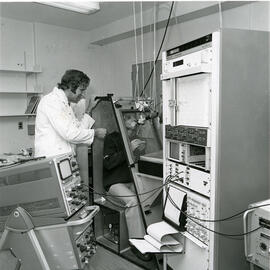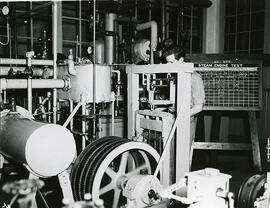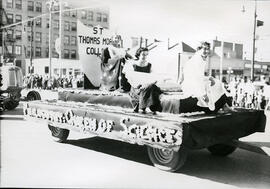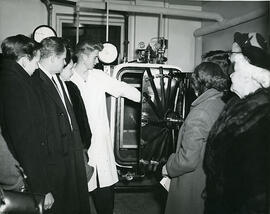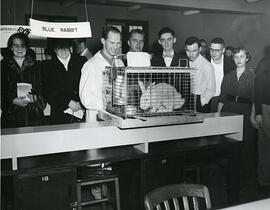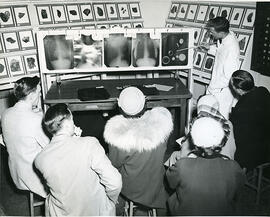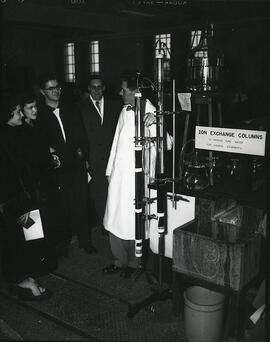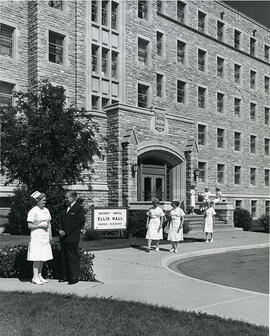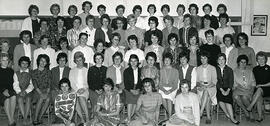University Hospital - Pulmonary Research Laboratory
- A-5059
- Item
- Oct. 1975
Dr. James Dosman (standing), professor, Pulmonary Research Laboratory, and Bob Ledington, a PHD student, demonstrate a volume displacement body plethysmograph with which the volume and rate that air is expired can be measured simultaneously and recorded immediately on a graph. By comparing the results obtained with air and with a mixture of oxygen and helium, the researchers believe they can detect obstruction of the peripheral airways, which is likely due to smoking but would probably not show up on a routine pulmonary function test. The reason is that whereas non-smokers increase their flow rate when they switch from air to the lighter helium mixture, many smokers do not. Current evidence indicates this is due to obstruction which might lead to irreversible lung damage.

